Sustainable Mortars for Application in the Cultural Heritage Field
Abstract
:1. Introduction
2. Experimental
3. Results and Discussion
4. Conclusions
Author Contributions
Funding
Institutional Review Board Statement
Informed Consent Statement
Data Availability Statement
Acknowledgments
Conflicts of Interest
Appendix A. Test Data
| Specimen Number | Compressive Strength 70 × 70 × 70 (N/mm2) | Tensile Strength Briquette (N/mm2) | Specimen Number | Compressive Strength 70 × 70 × 70 (N/mm2) | Tensile Strength Briquette (N/mm2) | Specimen Number | Compressive Strength 70 × 70 × 70 (N/mm2) | Tensile Strength Briquette (N/mm2) |
|---|---|---|---|---|---|---|---|---|
| A-Type Mortar | B-Type Mortar | C-Type Mortar | ||||||
| 1A28 | 4.38 | 1.10 | 1B28 | 3.44 | 0.73 | 1C28 | 3.68 | 0.71 |
| 2A28 | 4.38 | 0.98 | 2B28 | 2.88 | 0.71 | 2C28 | 3.30 | 0.71 |
| 3A28 | 4.40 | 1.28 | 3B28 | 3.56 | 0.80 | 3C28 | 3.08 | 0.65 |
| 4A28 | 4.32 | 0.96 | 4B28 | 3.28 | 0.75 | 4C28 | 3.12 | 0.61 |
| 5A28 | 4.34 | 1.14 | 5B28 | 3.48 | 0.73 | 5C28 | 3.12 | 0.74 |
| 6A28 | 4.40 | 1.22 | 6B28 | 3.50 | 0.69 | 6C28 | 2.84 | 0.67 |
| 7A28 | 4.13 | 1.18 | 7B28 | 3.40 | 0.70 | 7C28 | 2.68 | 0.59 |
| 8A28 | 4.44 | 1.28 | 8B28 | 3.28 | 0.69 | 8C28 | 3.24 | 0.71 |
| 9A28 | 4.34 | 1.22 | 9B28 | 3.06 | 0.61 | 9C28 | 3.26 | 0.59 |
| 10A28 | 4.40 | 1.10 | 10B28 | 3.36 | 0.73 | 10C28 | 3.14 | 0.73 |
| 11A28 | 4.36 | 1.16 | 11B28 | 3.36 | 0.75 | 11C28 | 3.28 | 0.51 |
| 12A28 | 4.36 | 1.04 | 12B28 | 3.40 | 0.69 | 12C28 | 3.36 | 0.59 |
| 13A28 | 3.76 | 0.90 | 13B28 | 4.80 | 0.73 | 13C28 | 3.84 | 0.80 |
| 14A28 | 3.92 | 1.14 | 14B28 | 4.00 | 0.86 | 14C28 | 4.52 | 0.69 |
| 15A28 | 4.00 | 0.94 | 15B28 | 4.20 | 0.78 | 15C28 | 4.44 | 0.88 |
| 16A28 | 3.40 | 1.12 | 16B28 | 4.28 | 0.88 | 16C28 | 4.04 | 0.75 |
| 17A28 | 3.86 | 1.14 | 17B28 | 3.96 | 0.78 | 17C28 | 4.20 | 0.80 |
| 18A28 | 3.40 | 1.10 | 18B28 | 4.40 | 0.77 | 18C28 | 4.24 | 0.73 |
| 19A28 | 3.84 | 1.16 | 19B28 | 4.08 | 0.88 | 19C28 | 3.08 | 0.88 |
| 20A28 | 3.68 | 1.12 | 20B28 | 4.20 | 0.77 | 20C28 | 4.20 | 0.84 |
| 21A28 | 3.76 | 1.08 | 21B28 | 4.56 | 0.78 | 21C28 | 4.72 | 0.77 |
| 22A28 | 3.68 | 1.06 | 22B28 | - | - | 22C28 | - | - |
| 23A28 | 3.20 | 1.06 | 23B28 | - | - | 23C28 | - | - |
| 24A28 | 3.36 | 1.06 | 24B28 | - | - | 24C28 | - | - |
| AVERAGE | 4.01 | 1.10 | 3.74 | 0.75 | 3.59 | 0.71 | ||
| ST. DEV. | 0.40 | 0.10 | 0.53 | 0.07 | 0.61 | 0.10 | ||
| CV% | 9.98 | 9.09 | 14.17 | 9.33 | 16.99 | 14.08 | ||
| Spec. N. | Ind. Tens. Strength 40 × 40 × 160 | Compr. Str. 40 × 40 × 40 (N/mm2) | Compr. Str. 40 × 40 × 40 (N/mm2) | Spec. N. | Ind. Tens. Strength 40 × 40 × 160 | Compr. Str. 40 × 40 × 40 (N/mm2) | Compr. Str. 40 × 40 × 40 (N/mm2) | Spec. N. | Ind. Tens. Strength 40 × 40 × 160 | Compr. Str. 40 × 40 × 40 (N/mm2) | Compr. Str. 40 × 40 × 40 (N/mm2) |
|---|---|---|---|---|---|---|---|---|---|---|---|
| A-Type Mortar | B-Type Mortar | C-Type Mortar | |||||||||
| 1A28 | 2.11 | 5.76 | 5.76 | 1B28 | 1.52 | 4.66 | 4.29 | 1C28 | 1.20 | 3.86 | 4.11 |
| 2A28 | 2.13 | 5.82 | 5.46 | 2B28 | 1.57 | 4.23 | 4.54 | 2C28 | 1.18 | 3.37 | 3.56 |
| 3A28 | 2.26 | 5.64 | 5.64 | 3B28 | 1.58 | 4.78 | 4.41 | 3C28 | 1.47 | 4.17 | 3.80 |
| 4A28 | 2.23 | 5.58 | 5.76 | 4B28 | 1.62 | 4.78 | 4.66 | 4C28 | 1.37 | 3.74 | 3.62 |
| 5A28 | 2.28 | 5.40 | 5.33 | 5B28 | 1.57 | 4.17 | 4.41 | 5C28 | 1.35 | 3.99 | 4.17 |
| 6A28 | 2.23 | 6.13 | 6.50 | 6B28 | 1.45 | 4.66 | 4.54 | 6C28 | 1.42 | 4.17 | 3.99 |
| 7A28 | 2.33 | 5.64 | 5.52 | 7B28 | 1.30 | 3.43 | 3.99 | 7C28 | 1.37 | 3.99 | 3.80 |
| 8A28 | 2.38 | 6.32 | 6.13 | 8B28 | 1.18 | 3.49 | 3.68 | 8C28 | 1.26 | 3.86 | 3.92 |
| 9A28 | 2.11 | 5.33 | 5.52 | 9B28 | 1.42 | 3.43 | 3.80 | 9C28 | 1.32 | 3.74 | 3.56 |
| 10A28 | 1.94 | 5.40 | 5.58 | 10B28 | 1.30 | 3.56 | 3.74 | 10C28 | 1.37 | 4.11 | 3.86 |
| 11A28 | 2.11 | 5.52 | 5.58 | 11B28 | 1.30 | 3.56 | 3.68 | 11C28 | 1.35 | 3.19 | 4.05 |
| 12A28 | 2.18 | 5.33 | 5.58 | 12B28 | 1.29 | 3.68 | 3.62 | 12C28 | 1.42 | 4.17 | 4.23 |
| 13A28 | 1.96 | 5.15 | 5.21 | 13B28 | 1.69 | 5.15 | 5.09 | 13C28 | 1.69 | 5.52 | 5.58 |
| 14A28 | 2.08 | 5.21 | 5.40 | 14B28 | 1.74 | 5.15 | 5.64 | 14C28 | 1.84 | 6.13 | 5.89 |
| 15A28 | 1.94 | 5.09 | 5.09 | 15B28 | 1.64 | 5.27 | 5.52 | 15C28 | 1.86 | 5.21 | 5.52 |
| 16A28 | 1.96 | 5.15 | 5.03 | 16B28 | 1.74 | 5.40 | 5.40 | 16C28 | 1.69 | 5.46 | 5.52 |
| 17A28 | 1.96 | 5.27 | 5.58 | 17B28 | 1.59 | 5.15 | 4.66 | 17C28 | 1.77 | 5.27 | 5.46 |
| 18A28 | 1.79 | 5.27 | 5.15 | 18B28 | 1.55 | 5.27 | 5.15 | 18C28 | 1.62 | 5.21 | 5.64 |
| 19A28 | 1.69 | 4.97 | 4.78 | 19B28 | 1.47 | 4.91 | 5.15 | 19C28 | 1.94 | 5.89 | 6.25 |
| 20A28 | 1.90 | 5.33 | 5.40 | 20B28 | 1.59 | 5.40 | 5.15 | 20C28 | 1.74 | 5.64 | 5.76 |
| 21A28 | 1.89 | 5.15 | 5.15 | 21B28 | 1.52 | 5.21 | 5.15 | 21C28 | 1.64 | 5.21 | 5.27 |
| 22A28 | 2.04 | 5.27 | 5.46 | 22B28 | 1.79 | 5.58 | 5.40 | 22C28 | 1.69 | 5.52 | 6.07 |
| 23A28 | 1.89 | 5.21 | 5.21 | 23B28 | 1.59 | 5.52 | 5.27 | 23C28 | 1.81 | 5.03 | 5.76 |
| 24A28 | 1.84 | 5.03 | 4.84 | 24B28 | 1.67 | 5.52 | 5.52 | 24C28 | 1.69 | 5.52 | 5.70 |
| AVG. | 2.05 | 5.42 | 5.44 | 1.53 | 4.66 | 4.69 | 1.55 | 4.51 | 4.63 | ||
| ST. DEV. | 0.18 | 0.34 | 0.38 | 0.16 | 0.76 | 0.67 | 0.23 | 0.88 | 0.96 | ||
| CV% | 8.78 | 6.27 | 6.99 | 10.46 | 16.31 | 14.29 | 14.84 | 19.51 | 20.73 | ||
| Specimen Number | Compressive Strength 70 × 70 × 70 (N/mm2) | Tensile Strength Briquette (N/mm2) | Specimen Number | Compressive Strength 70 × 70 × 70 (N/mm2) | Tensile Strength Briquette (N/mm2) | Specimen Number | Compressive Strength 70 × 70 × 70 (N/mm2) | Tensile Strength Briquette (N/mm2) |
|---|---|---|---|---|---|---|---|---|
| A-Type Mortar | B-Type Mortar | C-Type Mortar | ||||||
| 1A60 | 6.69 | 1.51 | 1B60 | 6.09 | 1.11 | 1C60 | 5.53 | 0.98 |
| 2A60 | 6.75 | 1.20 | 2B60 | 5.81 | 1.01 | 2C60 | 6.09 | 0.98 |
| 3A60 | 6.85 | 1.35 | 3B60 | 5.77 | 0.96 | 3C60 | 5.39 | 0.92 |
| 4A60 | 6.65 | 1.59 | 4B60 | 5.57 | 1.13 | 4C60 | 5.65 | 1.02 |
| 5A60 | 6.95 | 1.53 | 5B60 | 5.69 | 1.07 | 5C60 | 6.05 | 1.00 |
| 6A60 | 6.91 | 1.29 | 6B60 | 5.97 | 1.09 | 6C60 | 5.81 | 1.10 |
| 7A60 | 6.61 | 1.28 | 7B60 | 5.41 | 1.16 | 7C60 | 6.37 | 0.94 |
| 8A60 | 6.75 | 1.35 | 8B60 | 5.85 | 0.81 | 8C60 | 5.75 | 1.24 |
| 9A60 | 7.01 | 1.47 | 9B60 | 5.57 | 1.01 | 9C60 | 5.95 | 1.00 |
| 10A60 | 6.85 | 1.50 | 10B60 | 5.69 | 1.16 | 10C60 | 5.97 | 0.94 |
| 11A60 | 6.51 | 1.43 | 11B60 | 5.73 | 1.09 | 11C60 | 6.11 | 1.04 |
| 12A60 | 6.97 | 1.56 | 12B60 | 5.85 | 1.04 | 12C60 | 6.15 | 0.96 |
| AVERAGE | 6.79 | 1.42 | 5.75 | 1.05 | 5.9 | 1.01 | ||
| ST. DEV. | 0.16 | 0.13 | 0.19 | 0.10 | 0.28 | 0.09 | ||
| CV% | 2.36 | 9.15 | 3.30 | 9.52 | 4.75 | 8.91 | ||
| Spec. N. | Ind. Tens. Strength 40 × 40 × 160 | Compr. Str. 40 × 40 × 40 (N/mm2) | Compr. Str. 40 × 40 × 40 (N/mm2) | Spec. N. | Ind. Tens. Strength 40 × 40 × 160 | Compr. Str. 40 × 40 × 40 (N/mm2) | Compr. Str. 40 × 40 × 40 (N/mm2) | Spec. N. | Ind. Tens. Strength 40 × 40 × 160 | Compr. Str. 40 × 40 × 40 (N/mm2) | Compr. Str. 40 × 40 × 40 (N/mm2) |
|---|---|---|---|---|---|---|---|---|---|---|---|
| A-Type Mortar | B-Type Mortar | C-Type Mortar | |||||||||
| 1A60 | 2.99 | 8.89 | 8.89 | 1B60 | 2.26 | 7.17 | 7.23 | 1C60 | 2.26 | 5.76 | 6.13 |
| 2A60 | 2.92 | 8.58 | 8.89 | 2B60 | 2.24 | 7.23 | 6.50 | 2C60 | 1.84 | 6.25 | 6.07 |
| 3A60 | 2.58 | 8.40 | 7.97 | 3B60 | 2.37 | 6.56 | 6.74 | 3C60 | 2.13 | 6.44 | 6.99 |
| 4A60 | 3.19 | 9.07 | 9.20 | 4B60 | 2.23 | 6.99 | 6.62 | 4C60 | 2.16 | 6.81 | 6.99 |
| 5A60 | 2.99 | 8.58 | 8.71 | 5B60 | 2.15 | 6.99 | 6.50 | 5C60 | 2.21 | 7.11 | 7.11 |
| 6A60 | 2.70 | 8.34 | 8.22 | 6B60 | 2.23 | 6.93 | 6.74 | 6C60 | 2.08 | 6.93 | 6.62 |
| 7A60 | 2.84 | 8.34 | 8.22 | 7B60 | 2.24 | 6.38 | 7.11 | 7C60 | 2.26 | 6.13 | 6.74 |
| 8A60 | 2.67 | 8.83 | 8.34 | 8B60 | 2.35 | 6.93 | 6.62 | 8C60 | 2.31 | 5.64 | 6.74 |
| 9A60 | 2.89 | 8.28 | 8.71 | 9B60 | 2.29 | 6.74 | 7.60 | 9C60 | 2.26 | 7.11 | 7.23 |
| 10A60 | 2.82 | 8.22 | 8.40 | 10B60 | 2.16 | 6.50 | 6.50 | 10C60 | 2.08 | 6.74 | 6.68 |
| 11A60 | 2.77 | 8.58 | 8.46 | 11B60 | 2.05 | 6.99 | 7.05 | 11C60 | 2.16 | 6.87 | 7.48 |
| 12A60 | 3.24 | 8.89 | 9.07 | 12B60 | 2.11 | 6.25 | 6.50 | 12C60 | 2.04 | 6.93 | 6.87 |
| 13A60 | 2.84 | 8.46 | 8.52 | 13B60 | 2.43 | 6.99 | 6.87 | 13A60 | 2.35 | 6.62 | 6.81 |
| 14A60 | 2.92 | 8.15 | 8.46 | 146B0 | 2.53 | 7.11 | 7.48 | 14C60 | 2.18 | 6.62 | 6.99 |
| 15A60 | 2.92 | 8.34 | 8.40 | 15B60 | 1.26 | 6.87 | 7.11 | 15C60 | 2.18 | 6.87 | 6.25 |
| 16A60 | 2.99 | 9.01 | 8.52 | 16B60 | 1.79 | 6.50 | 7.05 | 16C60 | 2.11 | 5.89 | 6.25 |
| 17A60 | 2.72 | 8.15 | 8.28 | 17B60 | 2.38 | 6.74 | 7.23 | 17C60 | 2.18 | 6.62 | 5.89 |
| 18C60 | 2.33 | 7.05 | 6.81 | ||||||||
| AVG. | 2.88 | 8.54 | 8.54 | 2.18 | 6.82 | 6.91 | 2.17 | 6.58 | 6.70 | ||
| ST. DEV. | 0.17 | 0.30 | 0.33 | 0.29 | 0.29 | 0.36 | 0.12 | 0.46 | 0.43 | ||
| CV% | 5.90 | 3.51 | 3.86 | 13.30 | 4.25 | 5.21 | 5.53 | 6.99 | 6.42 | ||
| Specimen Number | Compressive Strength 70 × 70 × 70 (N/mm2) | Tensile Strength Briquette (N/mm2) | Specimen Number | Compressive Strength 70 × 70 × 70 (N/mm2) | Tensile Strength Briquette (N/mm2) | Specimen Number | Compressive Strength 70 × 70 × 70 (N/mm2) | Tensile Strength Briquette (N/mm2) |
|---|---|---|---|---|---|---|---|---|
| A-Type Mortar | B-Type Mortar | C-Type Mortar | ||||||
| 1A180 | 9.84 | 1.79 | 1B180 | 8.65 | 1.24 | 1C180 | 10.04 | 1.22 |
| 2A180 | 9.39 | 1.92 | 2B180 | 8.94 | 1.42 | 2C180 | 10.00 | 1.18 |
| 3A180 | 9.59 | 2.06 | 3B180 | 8.69 | 1.52 | 3C180 | 9.80 | 1.80 |
| 4A180 | 9.80 | 1.72 | 4B180 | 8.45 | 1.72 | 4C180 | 9.80 | 1.48 |
| 5A180 | 10.29 | 1.72 | 5B180 | 8.78 | 2.10 | 5C180 | 9.55 | 1.76 |
| 6A180 | 9.84 | 1.96 | 6B180 | 9.14 | 1.54 | 6C180 | 10.82 | 1.20 |
| 7A180 | 9.10 | 1.96 | 7B180 | 8.94 | 1.64 | 7C180 | 10.16 | 1.64 |
| 8A180 | 9.18 | 1.70 | 8B180 | 9.02 | 2.06 | 8C180 | 11.02 | 1.36 |
| 9A180 | 10.37 | 1.78 | 9B180 | 9.06 | 1.72 | 9C180 | 9.67 | 1.58 |
| 10A180 | 8.94 | 1.71 | ||||||
| 11A180 | 9.92 | 1.92 | ||||||
| 12A180 | 9.88 | 1.78 | ||||||
| AVERAGE | 9.67 | 1.83 | 8.85 | 1.66 | 10.10 | 1.47 | ||
| ST. DEV. | 0.45 | 0.12 | 0.22 | 0.28 | 0.51 | 0.24 | ||
| CV% | 4.64 | 6.67 | 2.54 | 16.87 | 5.01 | 16.43 | ||
| Spec. N. | Ind. Tens.Strength 40 × 40 × 160 | Compr. Str. 40 × 40 × 40 (N/mm2) | Compr. Str. 40 × 40 × 40 (N/mm2) | Spec. N. | Ind. Tens. Strength 40 × 40 × 160 | Compr. Str. 40 × 40 × 40 (N/mm2) | Compr. Str. 40 × 40 × 40 (N/mm2) | Spec. N. | Ind. Tens. Strength 40 × 40 × 160 | Compr. Str. 40 × 40 × 40 (N/mm2) | Compr. Str. 40 × 40 × 40 (N/mm2) |
|---|---|---|---|---|---|---|---|---|---|---|---|
| A-type Mortar | B-type Mortar | C-type Mortar | |||||||||
| 1A180 | 3.72 | 12.88 | 12.63 | 1B180 | 3.10 | 11.63 | 11.38 | 1C180 | 3.50 | 16.25 | 16.25 |
| 2A180 | 3.92 | 13.50 | 13.13 | 2B180 | 3.35 | 11.75 | 12.13 | 2C180 | 3.80 | 16.75 | 16.25 |
| 3A180 | 3.72 | 13.38 | 13.38 | 3B180 | 3.32 | 11.63 | 11.50 | 3C180 | 3.00 | 15.25 | 15.38 |
| 4A180 | 3.37 | 13.13 | 12.88 | 4B180 | 3.05 | 10.38 | 10.88 | 4C180 | 3.90 | 15.00 | 15.13 |
| 5A180 | 3.97 | 13.88 | 13.88 | 5B180 | 3.40 | 11.88 | 11.50 | 5C180 | 3.52 | 14.88 | 14.75 |
| 6A180 | 3.82 | 13.50 | 13.38 | 6B180 | 3.20 | 12.00 | 12.00 | 6C180 | 3.47 | 14.63 | 14.88 |
| 7A180 | 3.72 | 13.88 | 13.13 | 7B180 | 3.07 | 11.38 | 11.38 | 7C180 | 3.30 | 12.88 | 13.00 |
| 8A180 | 3.62 | 13.63 | 14.13 | 8B180 | 3.00 | 11.25 | 11.13 | 8C180 | 3.75 | 14.25 | 13.50 |
| 9A180 | 3.66 | 13.13 | 13.25 | 9B180 | 3.17 | 11.75 | 11.50 | 9C180 | 3.77 | 14.13 | 13.75 |
| 10A180 | 3.82 | 13.13 | 13.63 | 10B180 | 3.15 | 11.38 | 11.13 | 10C180 | 3.37 | 13.44 | 13.75 |
| 11A180 | 3.52 | 13.75 | 13.75 | 11B180 | 3.20 | 11.38 | 11.50 | 11C180 | 3.67 | 13.13 | 13.25 |
| 12A180 | 3.70 | 13.63 | 13.25 | 12B180 | 3.37 | 12.00 | 11.50 | 12C180 | 3.62 | 13.50 | 13.75 |
| 13A180 | 3.50 | 14.00 | 13.63 | — | — | — | — | — | — | — | — |
| 14A180 | 3.62 | 13.63 | 13.75 | — | — | — | — | — | — | — | — |
| 15A180 | 3.55 | 12.88 | 13.50 | — | — | — | — | — | — | — | — |
| AVG. | 3.68 | 13.46 | 13.42 | — | 3.19 | 11.53 | 11.46 | — | 3.56 | 14.51 | 14.47 |
| ST. DEV. | 0.16 | 0.36 | 0.39 | — | 0.13 | 0.44 | 0.35 | — | 0.26 | 1.20 | 1.13 |
| CV% | 4.40 | 2.69 | 2.94 | — | 4.20 | 3.84 | 3.03 | — | 7.09 | 8.30 | 7.79 |
References
- Rodrigues, P.F.; Henriques, F.M.A. Current Mortars in Conservation: An Overview. IJR 2004, 10, 609–622. [Google Scholar]
- Stefanidou, M.; Pachta, V.; Konopissi, S.; Karkadelidou, F.; Papayianni, I. Analysis and characterization of hydraulic mortars from ancient cisterns and baths in Greece. Mater. Struct. 2014, 47, 571–580. [Google Scholar]
- Guadagnuolo, M.; Faella, G.; Donadio, A.; Ferri, L. Integrated evaluation of the Church of S. Nicola di Mira: Conservation versus safety. NDT & E Int. 2014, 68, 53–65. [Google Scholar]
- Papayianni, I.; Stefanidou, M. Durability aspects of ancient mortars of the archaeological site of Olynthos. J. Cult. Herit. 2007, 8, 193–196. [Google Scholar]
- Monaco, M.; Bergamasco, I.; Betti, M. A no-tension analysis for a brick masonry vault with lunette. J. Mech. Mater. 2019, 13, 703–714. [Google Scholar]
- DPCM 09.02.2011. Valutazione e Riduzione del Rischio Sismico del Patrimonio Culturale con Riferimento alle Norme Tecniche per le Costruzioni di cui al Decreto del Ministero delle Infrastrutture e dei Trasporti del 14 Gennaio 2008 (11A02374); S.O. alla Gazzetta Ufficiale n. 54 del 26.02.2011; Gazzetta Ufficiale della Repubblica Italiana: Roma, Italy, 2011. (In Italian) [Google Scholar]
- Gesualdo, A.; Monaco, M. Seismic vulnerability reduction of existing masonry buildings, Modelling of retrofitting tecniques. In Urban Habitat Construction under Catastrophic Events; CRC Press, Taylor & Francis Group: London, UK; New York, NY, USA, 2010; Volume 1, pp. 853–858. [Google Scholar]
- Baronio, G.; Binda, L. Study of the pozzolanicity of some bricks and clays. Constr. Build. Mater. 1997, 11, 41–46. [Google Scholar]
- Van Balen, K.; Papayianni, I.; Van Hees, R.; Binda, L.; Waldum, A. Introduction to requirements for and functions and properties of repair mortars. Mater. Struct. 2005, 38, 781–785. [Google Scholar]
- Velosa, A.L.; Coroado, J.; Veiga, M.R.; Rocha, F. Characterizations of roman mortars from Conímbriga with respect to their repair. Mater. Charact. 2007, 58, 1208–1216. [Google Scholar]
- Charola, A.E.; Henriques, F.A. Lime mortars: Same considerations on testing standardization. In Use and Need for Preservation Standards in Architectural Conservation; McClung, R.C., Ed.; ASTM STP 1355; ASTM International: West Conshohocken, PA, USA, 1998. [Google Scholar]
- Faria, P.; Henriques, F.; Rato, V. Comparative evaluation of lime mortars for architectural conservation. J. Cult. Herit. 2008, 9, 338–346. [Google Scholar]
- Drdácký, M. Non-Standard Testing of Mechanical Characteristics of Historic Mortars. Int. J. Archit. Herit. 2011, 5, 383–394. [Google Scholar]
- MIT-Italian Ministry of Infrastructure and Transport. Norme Tecniche per le Costruzioni; DM 17.01.2018, Gazzetta Ufficiale n. 42, 20.02.2018; MIT-Italian Ministry of Infrastructure and Transport: Roma, Italy, 2018. (In Italian)
- Moropolou, A.; Bakolas, A.; Anagnostopoulou, S. Composite materials in ancient structures. Cem. Concr. Compos. 2005, 27, 295–300. [Google Scholar]
- Avdelidis, N.P.; Moropoulou, A. Applications of infrared thermography for the investigation of historic structures. J. Cult. Herit. 2004, 5, 119–127. [Google Scholar]
- Hughes, J.J. RILEM TC 203-RHM Repair mortars for historic masonry. The role of mortar in masonry: An introduction to requirements for the design of repair mortars. Mater. Struct. 2009, 45, 1287–1294. [Google Scholar]
- Kaklis, K.N.; Maurigiannakis, S.P.; Agioutantis, Z.G.; Maravelaki-Kalaitzaki, P. Characterization of pozzolanic lime mortars used as filling material in shaped grooves for restoring member connections in ancient monuments. Int. J. Archit. Herit. 2018, 12, 75–90. [Google Scholar]
- Norme per L’accettazione e per il Collaudo dei Materiali da Costruzione; R.D. 11/06/1939, n. 2228–2235; Istituto Poligrafico e Zecca dello Stato: Roma, Italy, 1940. (In Italian)
- Bakolas, A.; Aggelakopoulou, E. Pozzolanic activity of natural pozzolan-lime pastes and physic mechanical characteristics. JTAC 2018, 135, 2953–2961. [Google Scholar]
- Bakolas, A.; Aggelakopoulou, E.; Moropoulou, A. Evaluation of pozzolanic activity and physicomechanical characteristics in ceramic powder-lime pastes. JTAC 2008, 92, 345–351. [Google Scholar]
- Doganis, Y.; Galanos, A. Conservation of the plaster at the Lavriotike or washeries. In Proceedings of the 2nd Conference on Historic Mortars—HMC 2010 and RILEM TC 203-RHM Final Workshop, Prague, Czech Republic, 22–24 September 2010; Válek, J., Groot, C., Hughes, J.J., Eds.; Curran Associates, Inc.: Red Hook, NY, USA, 2010; pp. 591–598. ISBN 978-2-35158-112-4. [Google Scholar]
- Jornet, A.; Mosca, C.; Cavallo, G.; Corredig, G. Comparison between traditional, lime based, and industrial, dry mortars. In Proceedings of the 2nd Conference on Historic Mortars—HMC 2010 and RILEM TC 203-RHM Final Workshop, Prague, Czech Republic, 22–24 September 2010; Válek, J., Groot, C., Hughes, J.J., Eds.; Curran Associates, Inc.: Red Hook, NY, USA, 2010; pp. 631–641. ISBN 978-2-35158-112-4. [Google Scholar]
- Papayianni, I.; Pachta, V. Experimental study on the performance of lime-based grouts used in consolidating historic masonries. Mater. Struct. 2015, 48, 2111–2121. [Google Scholar]
- Sala, E.; Giustina, I.; Plizzari, G.A. Lime mortar with natural pozzolana: Historical issues and mechanical behavior. In Proceedings of the 6th International Conference on Structural Analysis of Historical Construction, Bath, UK, 2–4 July 2008; Balkema/CRC Press: London, UK, 2008; pp. 957–963. [Google Scholar]
- Štukovnik, P.; Marinšek, M.; Mirtič, B.; Bokan Bosiljkov, V. Influence of alkali carbonate reaction on compressive strength of mortars with air lime binder. Constr. Build. Mater. 2005, 75, 247–254. [Google Scholar]
- Tavares, M.L.; Veiga, R.; Fragata, A. Grouting mortars for consolidation of historical renders showing loss of adhesion. In Proceedings of 2nd Conference on Historic Mortars—HMC 2010 and RILEM TC 203-RHM Final Workshop, Prague, Czech Republic, 22–24 September 2010; Válek, J., Groot, C., Hughes, J.J., Eds.; Curran Associates, Inc.: Red Hook, NY, USA, 2010; pp. 743–752. ISBN 978-2-35158-112-4. [Google Scholar]
- Thirumalini, S.; Ravib, R.; Rajeshc, M. 2018. Experimental investigation on physical and mechanical properties of lime mortar: Effect of organic addition. J. Cult. Herit. 2018, 31, 97–104. [Google Scholar]
- Uranjek, M.; Zarnic, R.; Bosiljkov, V. Strengthening of heritage buildings by means of grout injection-problems and solutions. In Proceedings of the 2nd Conference on Historic Mortars—HMC 2010 and RILEM TC 203-RHM Final Workshop, Prague, Czech Republic, 22–24 September 2010; Válek, J., Groot, C., Hughes, J.J., Eds.; Curran Associates, Inc.: Red Hook, NY, USA, 2010; pp. 769–777, ISBN 978-2-35158-112-4. [Google Scholar]
- Erdoğan, T.Y. Admixtures for Concrete; The Middle East Technical University Press: Ankara, Turkey, 1997. [Google Scholar]
- Murat, M. Hydration reaction and hardening of calcinated clays and related minerals, Preliminary investigation on metakaolinite. Cem. Concr. Res. 1983, 13, 259–266. [Google Scholar]
- Adam, J.P. Roman Building: Materials and Techniques; Translated by Anthony Mathew; Routledge: London, UK, 1984. [Google Scholar]
- Pollio, V. Ten Books on Architecture; Morgan, M.H., Translator; Dover Publications Inc.: New York, NY, USA, 1960. [Google Scholar]
- Seneca, L.A. Seneca, De Questionibus Naturalibus, de Remediis Fortuitorum, Liber Proverbiorum; Impressum F. Matteo; Bibliothèque Nationale de France, Département des Manuscrits: Paris, France, 1450–1460. (In Latin) [Google Scholar]
- Plinii Secundi, C. Naturalis Historia; Antonii-Urbani Coustelier: Paris, France, 1723. [Google Scholar]
- Di Giorgio Martini, F. Trattati di Architettura, Ingegneria e Arte Militare; Tipografia Chirio e Mina: Turin, Italy, 1841. (In Italian) [Google Scholar]
- Vasari, G. Vite de’ più Eccellenti Architetti, Pittori et Scultori Italiani, da Cimabue Insino a ‘Tempi Nostri; L. Torrentino: Firenze, Italy, 1550. (In Italian) [Google Scholar]
- Alberti, L.B. I Dieci Libri de L’architettura: Nouamente de la Latina ne la Volgar Lingua con Molta Diligenza Tradotta; Vincenzo Vavgris: Vinegia, Italy, 1546. (In Italian) [Google Scholar]
- Serlio, S. Tutte L’opere D’architettura; Impressum; Francesco dé Franceschi: Venezia, Italy, 1584. (In Italian) [Google Scholar]
- Palladio, A. I Quattro Libri Dell’architettura; Domenico de’ Franceschi: Venezia, Italy, 1570. (In Italian) [Google Scholar]
- Cataneo, P. L’architettura; Impressum; Manutius: Venedig, Italy, 1567. (In Italian) [Google Scholar]
- Scamozzi, V. L’ idea Dell’architettura Universale; Expensis Auctoris: Venezia, Italy, 1615. (In Italian) [Google Scholar]
- Vicat, L.J. Traité Pratique et Theoritique de la Composition des Mortiers, Ciments et Gangues du Pouzzolanas; Ponts et Chausses: Paris, France, 1856. [Google Scholar]
- Vicat, L.J. Recherches Expérimentales sur les Chaux de Construction, les Betons et les Mortiers Ordinaires; Académie Royale de Sciences: Paris, France, 1818. [Google Scholar]
- Viviani, Q. L’architettura di Vitruvio Tradotta in Italiano da Quirico Viviani; Mattiuzzi: Udine, Italy, 1830; p. 441. (In Italian) [Google Scholar]
- Valadier, G. L’architettura Pratica; Originally published: L’architettura pratica dettata nella scuola e cattedra dell’insigne Accademia di San Luca. Rome, 1839; Sapere 2000: Roma, Italy, 1992. (In Italian) [Google Scholar]
- Quatremere de Quincy, A.C. Dictionnarie Historique D’architecture, Comprénant dans son Plan les Notions Historique, Descriptives, Archeologiques, Biographiques, Theoriques Didactiques et Pratiques de Cert Art; Librairie d’Adrien Le Clere et cie: Paris, France, 1832. [Google Scholar]
- Cavalieri San Bertolo, N. Istruzioni di Architettura Statica e Idraulica; Fratelli Negretti: Mantova, Italy, 1831. (In Italian) [Google Scholar]
- De Cesare, F. La Scienza Dell’architettura; Giovanni Pellizone: Napoli, Italy, 1855. (In Italian) [Google Scholar]
- Claudel, J.; Laroque, L. Pratique de L’arte de Construire; Carilian-Goeuryet: Parigi, France, 1863. [Google Scholar]
- Curioni, G. L’arte di Fabbricare, Ossia Corso Completo di Istituzioni Teorico-Pratiche; Augusto Federico Negro: Torino, Italy, 1864. (In Italian) [Google Scholar]
- Levi, C.; Astrua, G. Manuale del Capomastro Assistente; Hoepli: Milano, Italy, 1927. (In Italian) [Google Scholar]
- Filarete, A. Trattato Dell’architettura; Finoli, A.M., Grassi, L., Eds.; Edizioni il Polifilo: Milano, Italy, 1972. (In Italian) [Google Scholar]
- Gesualdo, A.; Calderoni, B.; Iannuzzo, A.; Fortunato, A.; Monaco, M. Minimum energy strategies for the in-plane behaviour of masonry. Frat. ed Integrità Strutt. 2020, 14, 376–385. [Google Scholar]
- Gesualdo, A.; Calderoni, B.; Sandoli, A.; Monaco, M. Minimum energy approach for the in-plane shear resistance of masonry panels. Ing. Sismica 2019, 36, 42–53. [Google Scholar]
- Monaco, M.; Guadagnuolo, M. Out of plane behaviour of unreinforced masonry walls. In Proceedings of the Prohitech—Protection of Historical Buildings—First International Conference, Rome, Italy, 21–24 June 2009. [Google Scholar]
- Mood, A.M.; Graybill, F.A.; Boes, D.C. Introduction to the Theory of Statistics; McGraw-Hill: Auckland, CA, USA, 1974. [Google Scholar]
- Margaritis, A.; Soenen, H.; Fransen, E.; Pipintakos, G.; Jacobs, G.; Blom, J.; Van den bergh, W. Identification of ageing state clusters of reclaimed asphalt binders using principal component analysis (PCA) and hierarchical cluster analysis (HCA) based on chemo-rheological parameters. Constr. Build. Mater. 2020, 244, 118276. [Google Scholar] [CrossRef]
- American Society of Civil Engineering. Prestandard for the Seismic Rehabilitation of Buildings; FEMA 356; American Society of Civil Engineering: Reston, VA, USA, 2000. [Google Scholar]
- Lanas, J.; Bernal, J.P.; Bello, M.A.; Galindo, J.A. Mechanical properties of natural hydraulic lime-based mortars. Cem. Concr. Res. 2004, 34, 2191–2201. [Google Scholar]
- Lindqvist, J.E.; Maurenbrecher, P. Testing of hardened mortars, a process of questioning and interpreting. A publication from RILEM TC 203-RHM Repair mortars for historic masonry. Mater. Struct. 2009, 47, 853–865. [Google Scholar]
- Faella, G.; Aurilio, M.; Tafuro, A.; Frunzio, G. Natural Pozzolanic Mortars for Cultural Heritage. Int. J. Adv. Res. Eng. Technol. 2020, 11, 282–296. [Google Scholar]
- Navrátilová, E.; Tihlaříková, E.; Neděla, V. Effect of the preparation of lime putties on their properties. Sci. Rep. 2017, 7, 17260. [Google Scholar] [CrossRef]
- Mascolo, G.; Mascolo, M.C.; Vitale, A.; Marino, O. Microstructure evolution of lime putty upon aging. J. Cryst. Growth 2010, 312, 2363–2368. [Google Scholar]
- Angiolilli, M.; Gregori, A.; Vailati, M. Lime-based mortar reinforced by randomly oriented short fibers for the retrofitting of the historical masonry structure. Materials 2020, 13, 3462. [Google Scholar]
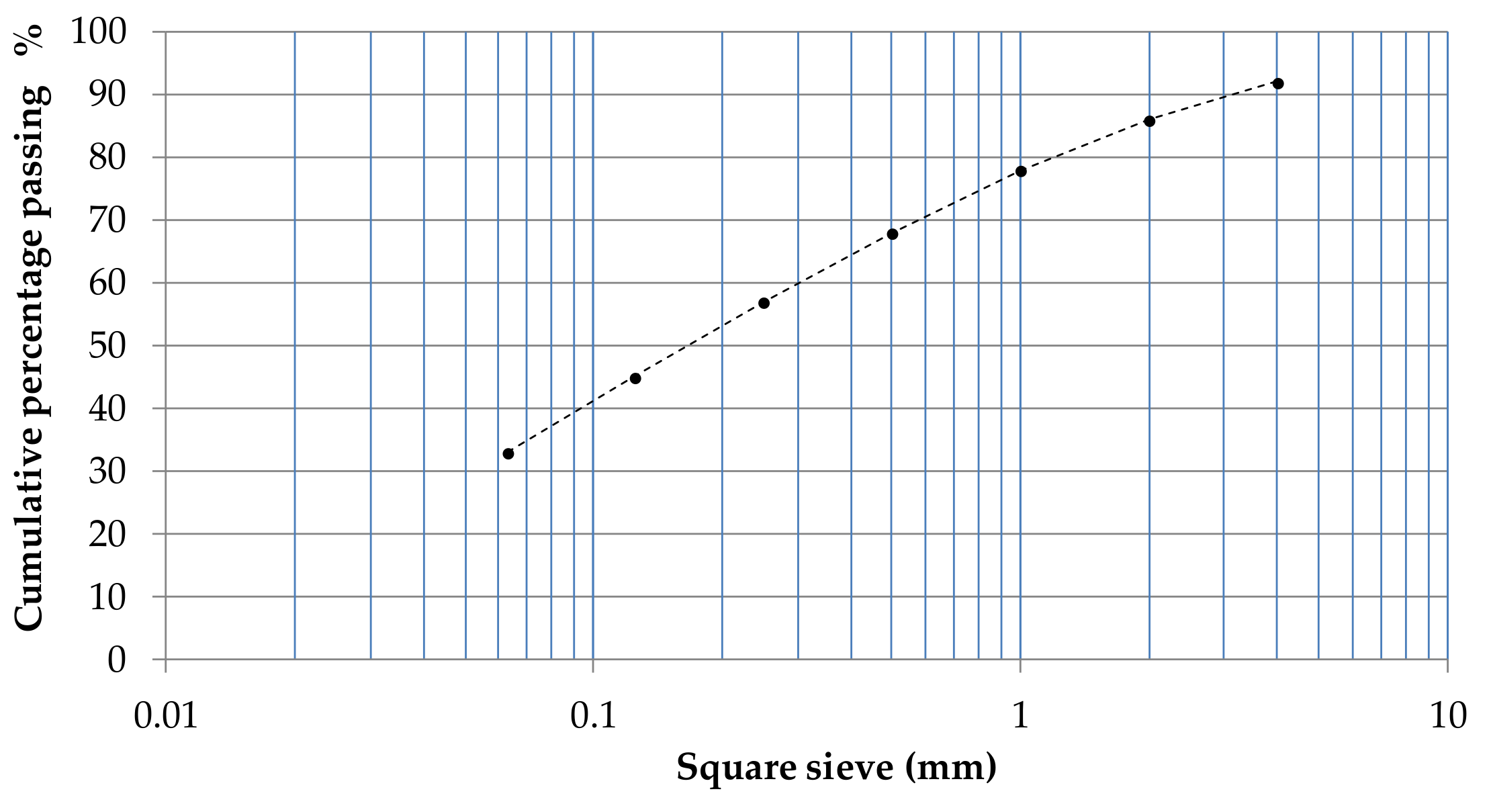
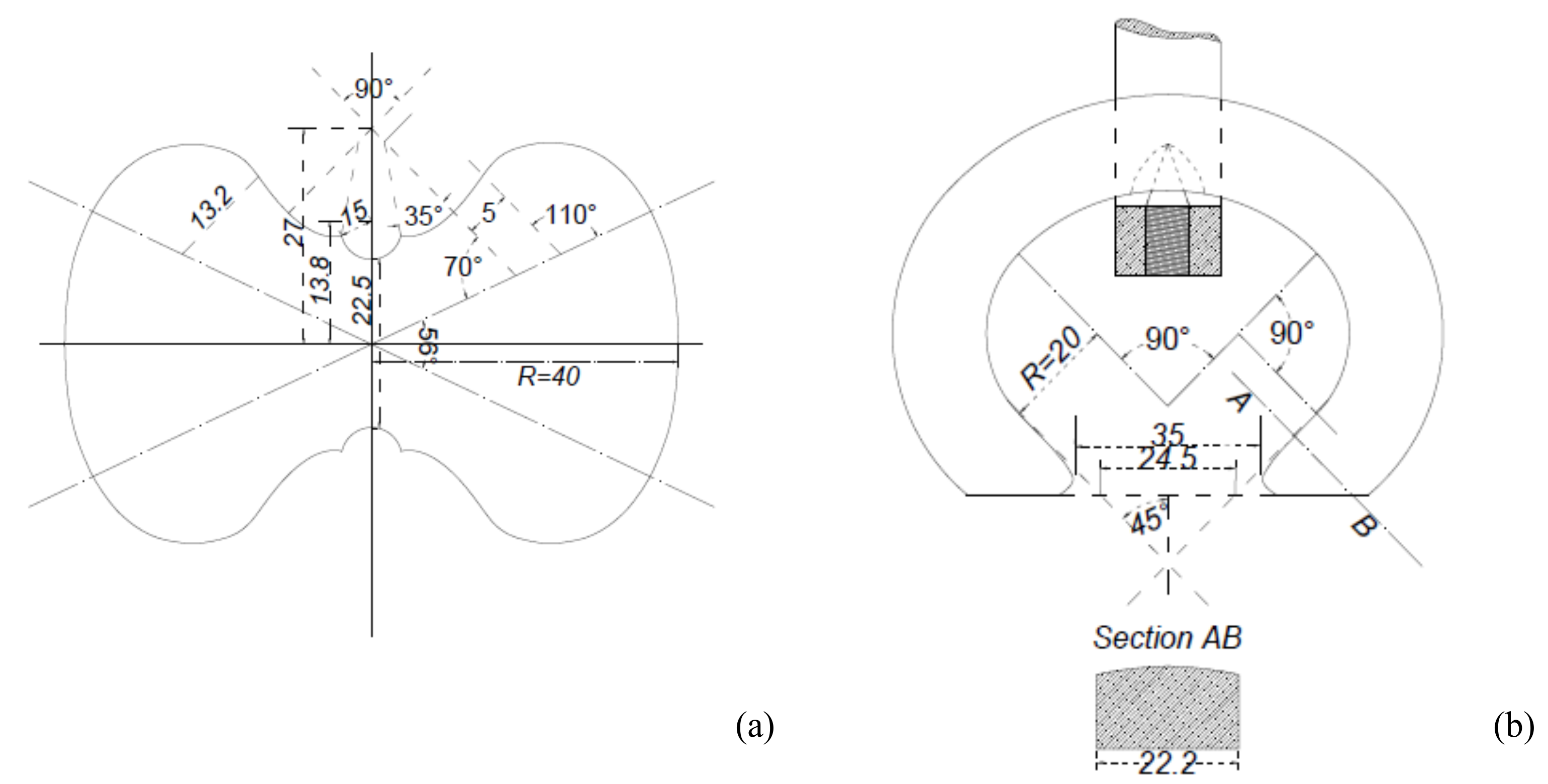
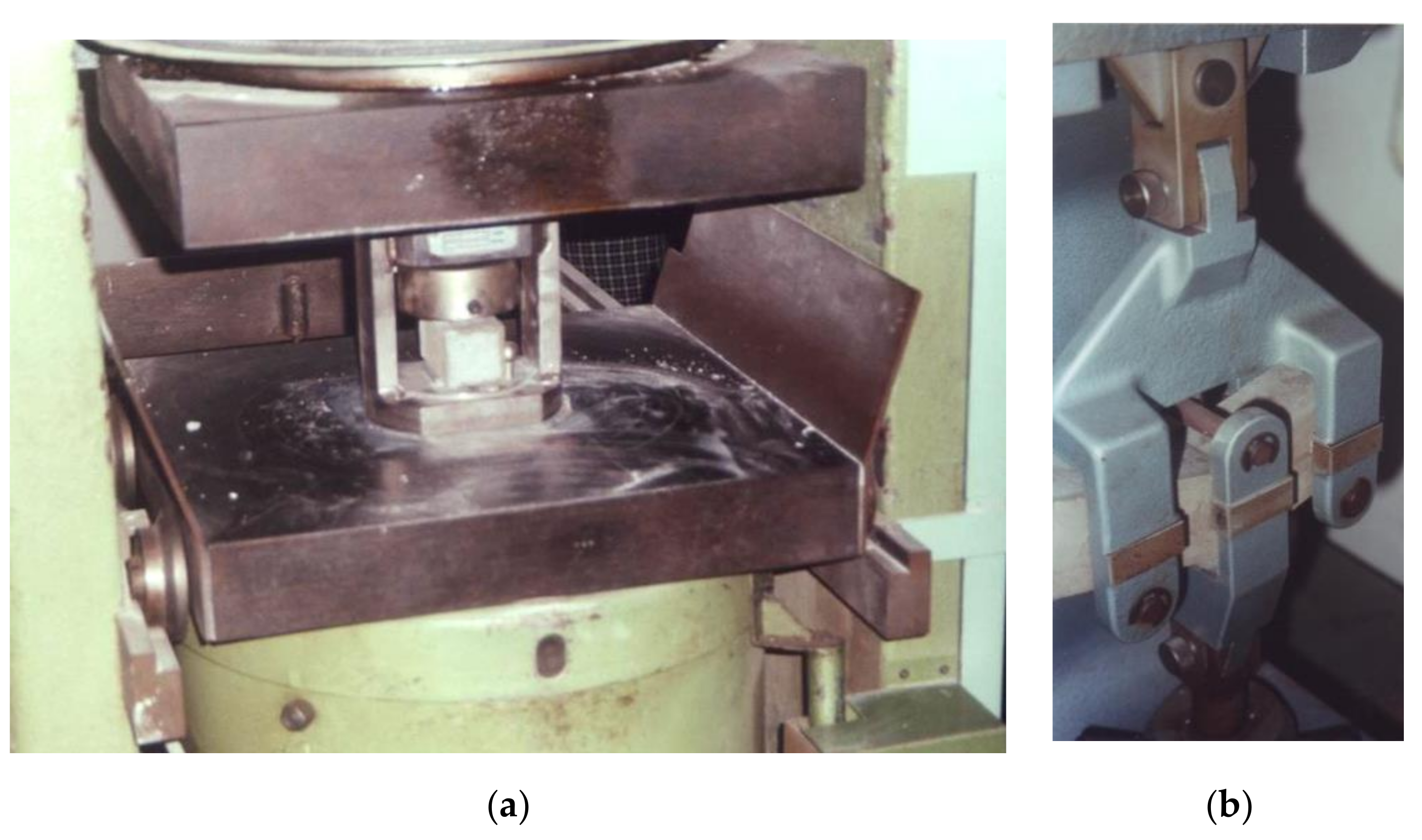
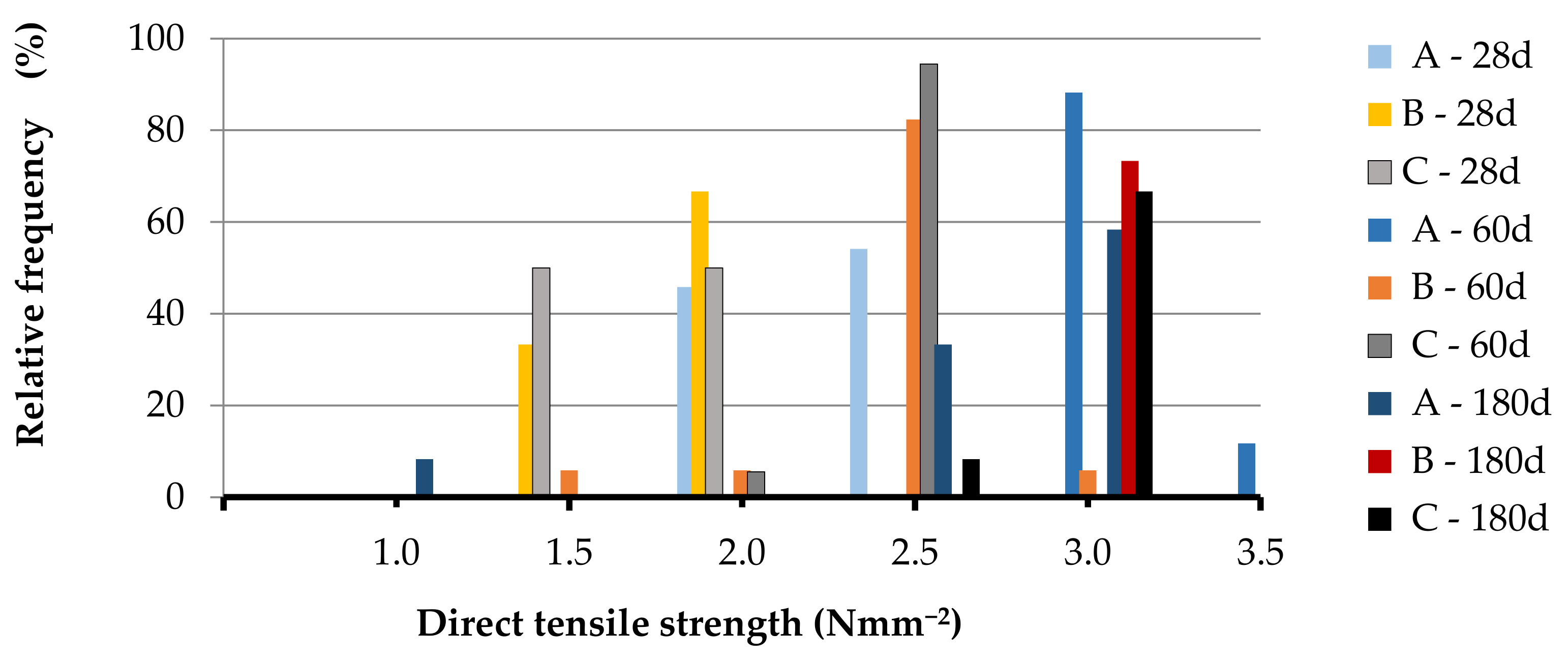
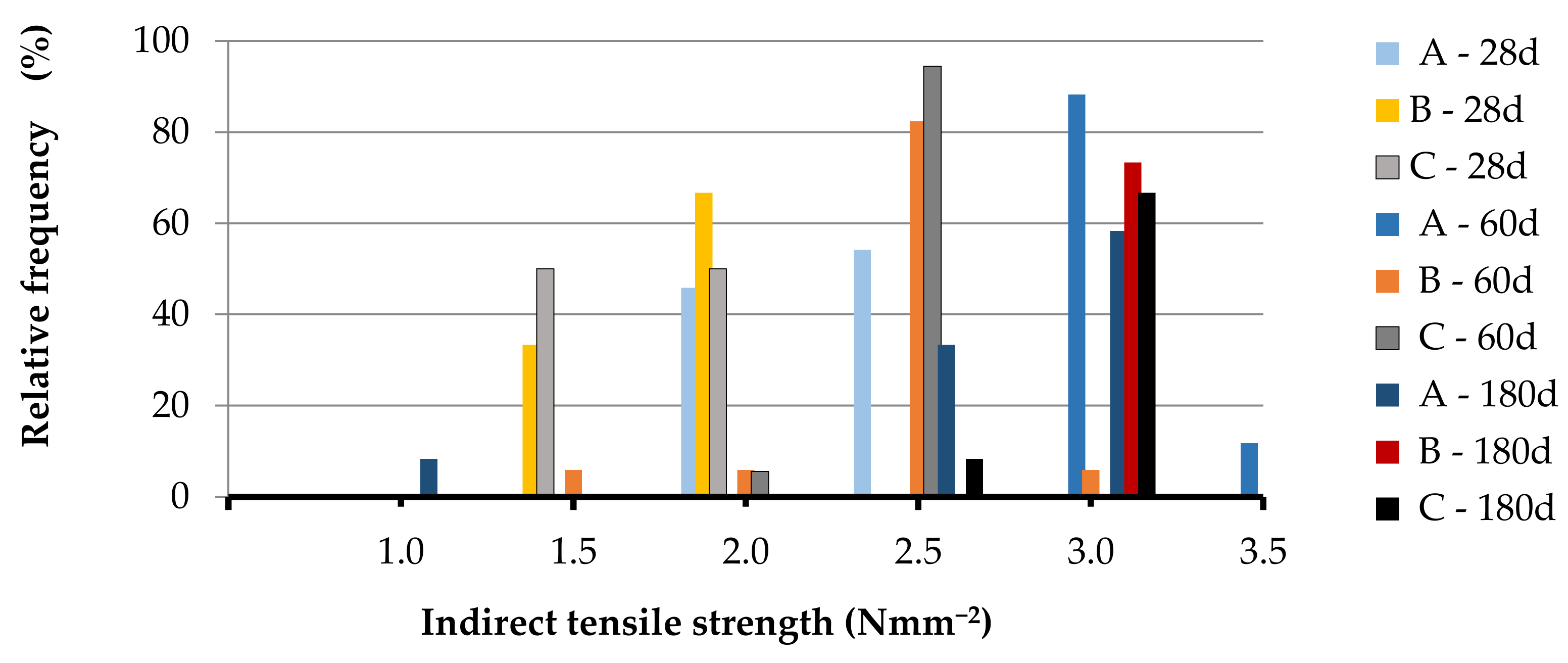
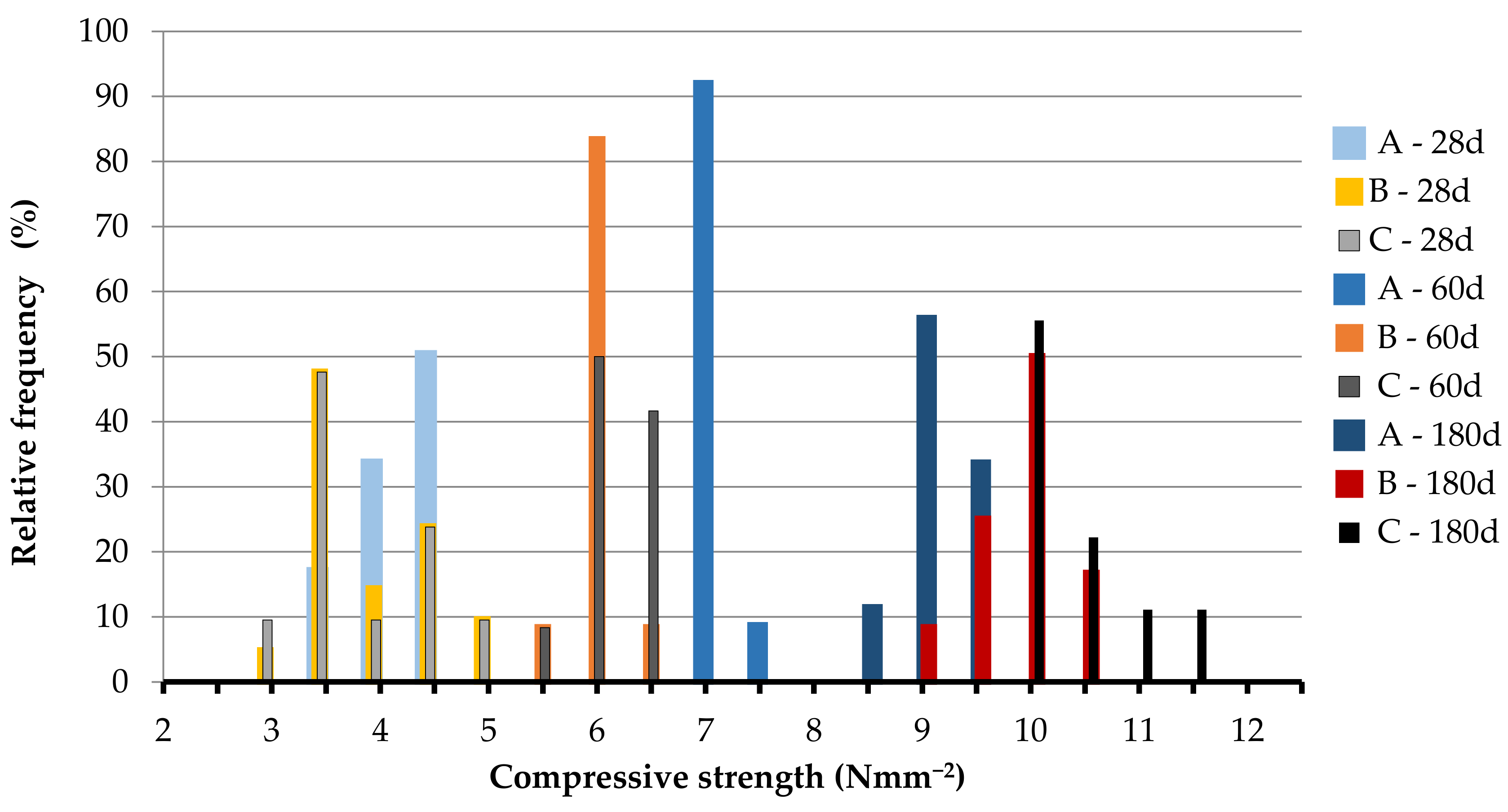
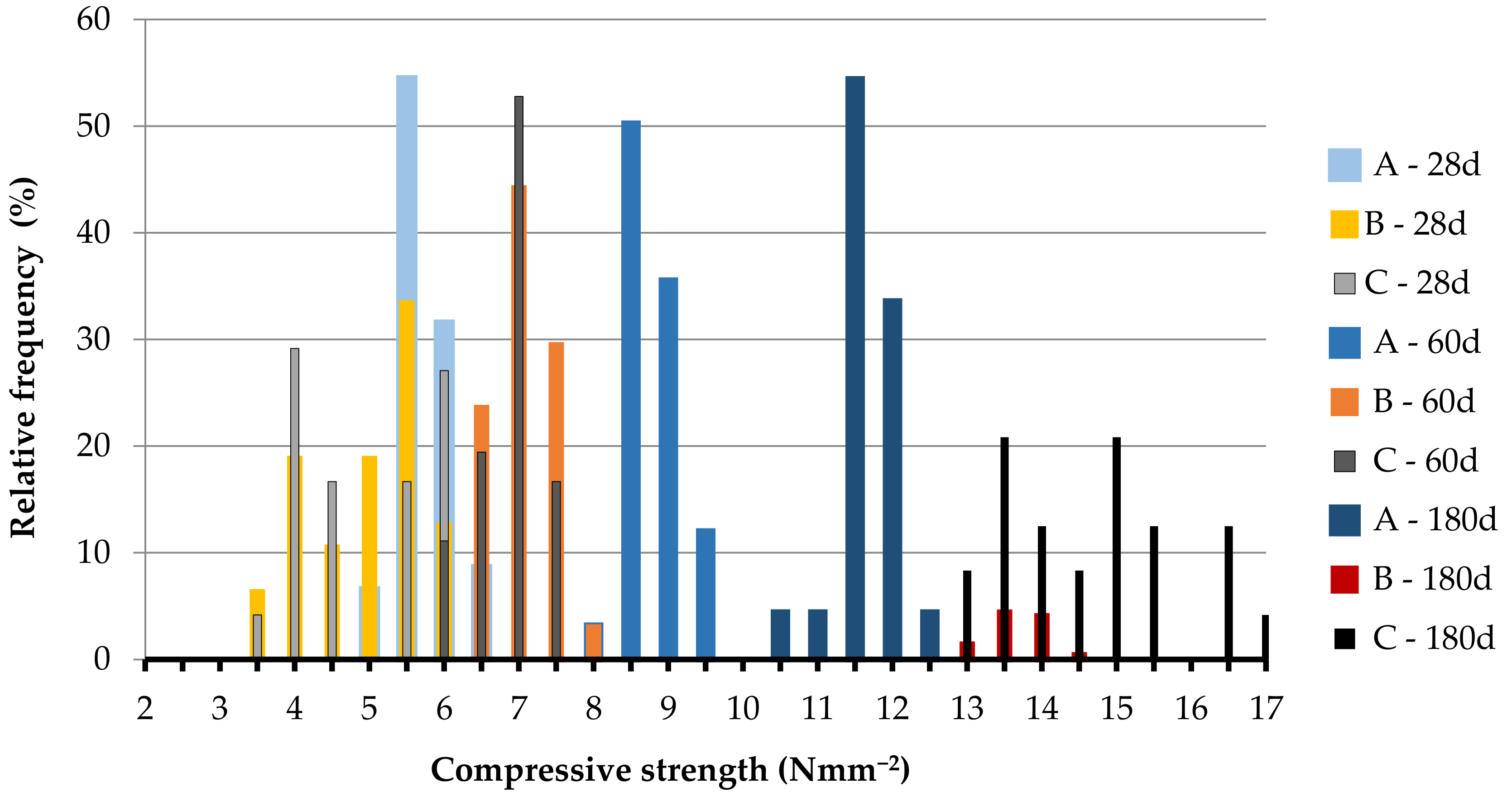

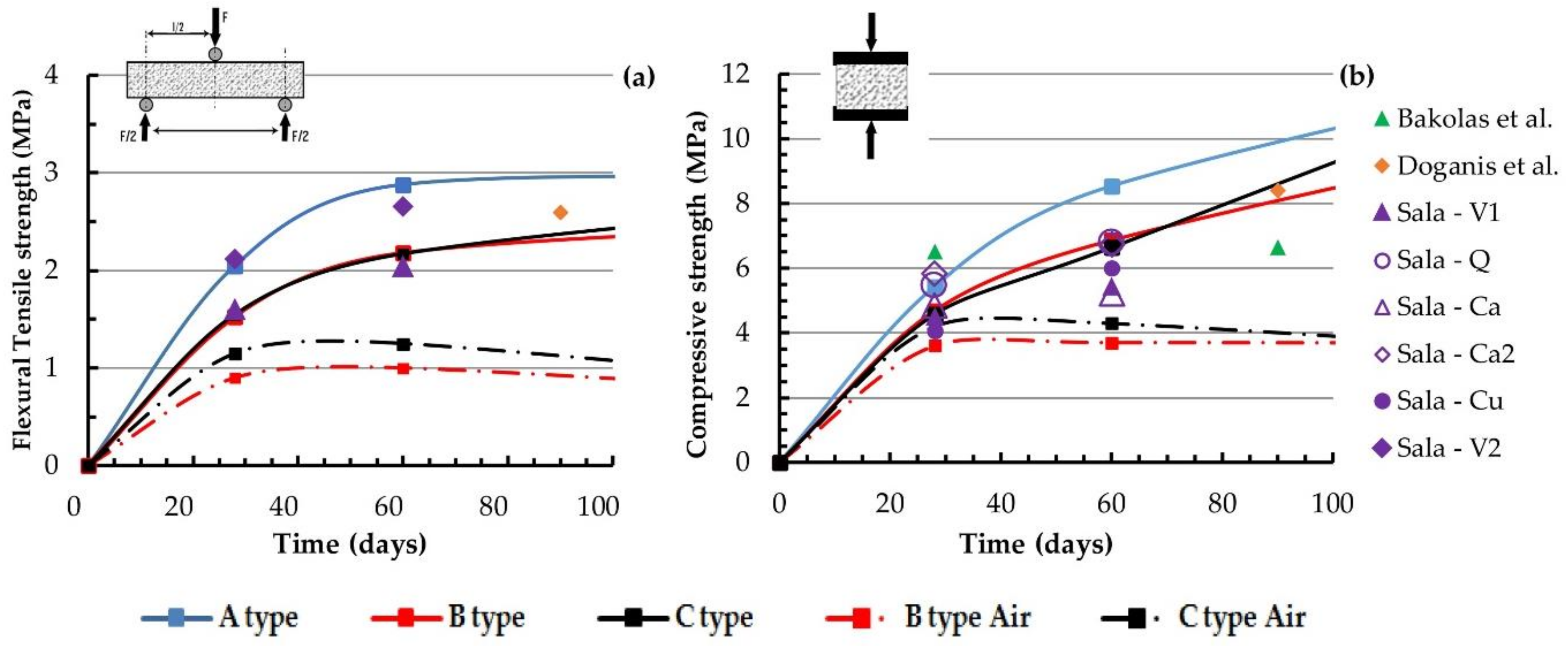
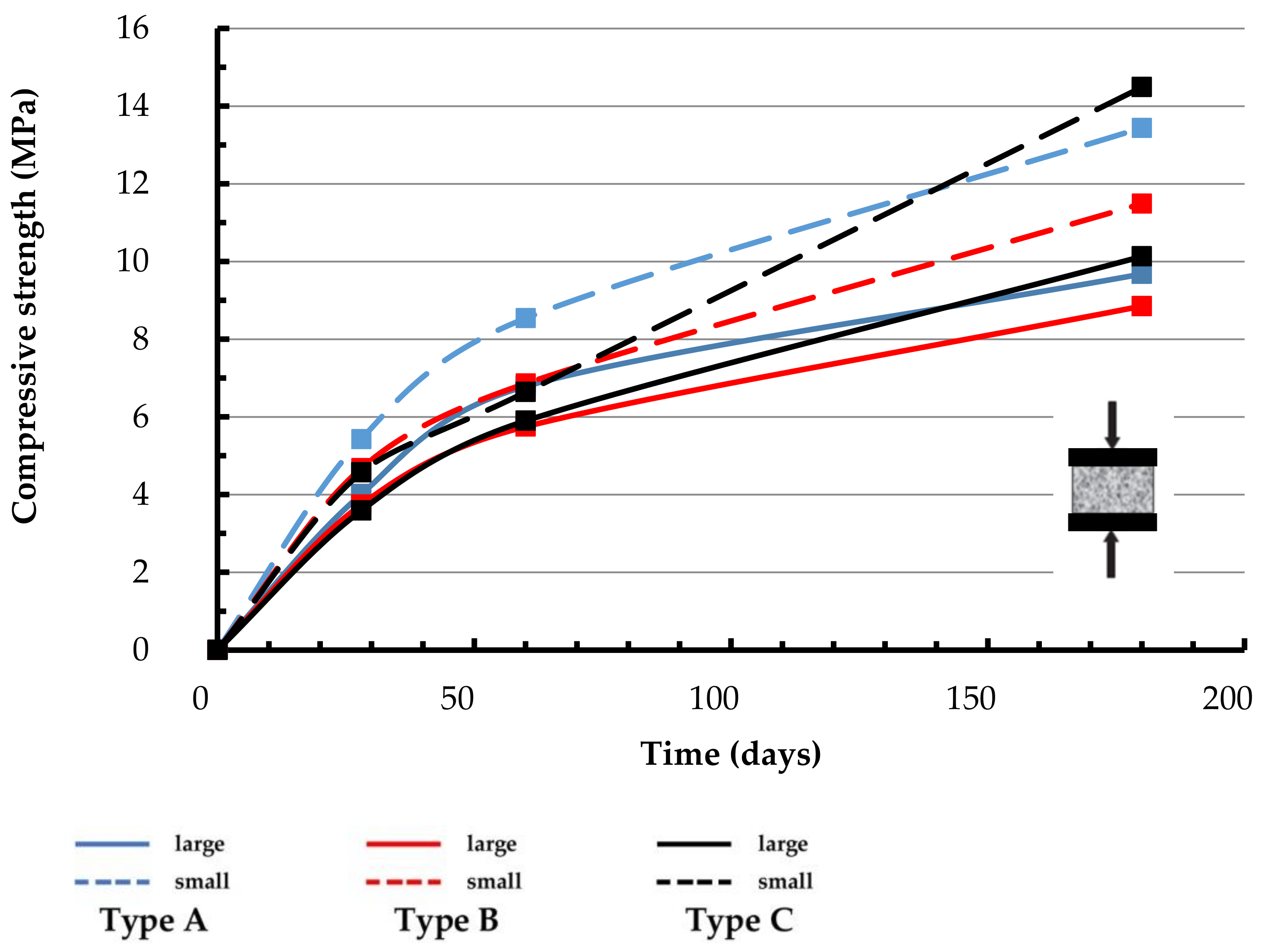
| Reference | Period | Pozzolan | Lime | Sand |
|---|---|---|---|---|
| Vitruvius Pollio [33] | I cent. B.C. | 2.00 | 1.00 | |
| Martini di Giorgio F. [36] | 1470 | 0.50 | 1.00 | |
| Viviani Q. [45] | ||||
| Hydraulic works | 1830 | 1.33 | 1.00 | 0.67 |
| Normal | 1830 | 2.00 | 1.00 | 1.00 |
| Valadier G. [46] | 1831 | 5.00 | 1.00 | |
| Quatremere de Quincy [47] | ||||
| Strong | 1832 | 3.00 | 1.00 | |
| Normal | 1832 | 2.00 | 1.00 | |
| Cavalieri S. Bertolo N. [48] | ||||
| Stone wall | 1832 | 5.67 | 1.00 | |
| Palette walls | 1832 | 3.00 | 1.00 | |
| Bulk brick masonry | 1832 | 2.33 | 1.00 | |
| Curtain brick masonry | 1832 | 1.22 | 1.00 | |
| de Cesare F. [49] | ||||
| Normal | 1855 | 2.00 | 1.00 | 3.00 |
| Cocciopesto | 1855 | 1.20 | 1.00 | 0.60 |
| Constructions in water | 1855 | 1.00 | 1.00 | 2.00 |
| Plaster with Santorini earth | 1855 | 5.18 | 1.00 | |
| Claudel J. & Loroque L. [50] | ||||
| Weak | 1863 | 0.80 | 1.00 | 1.80 |
| Normal | 1863 | 1.00 | 1.00 | 2.22 |
| Strong | 1863 | 1.11 | 1.00 | 2.78 |
| Curioni G. [51] | ||||
| Weak | 1864 | 0.50 | 1.00 | 0.25 |
| Normal | 1864 | 3.00 | 1.00 | |
| Strong | 1864 | 1.00 | 1.00 | 2.00 |
| Levi C. & Astrua G. [52] | 1927 | 3.00 | 1.00 |
| Mortar Type | Lime Type | Lime | Pozzolan | Water |
|---|---|---|---|---|
| A | Industrial hydrated lime | 1.00 | 3.00 | 1.37 |
| B | Industrial lime putty | 1.00 | 4.17 | 1.06 |
| C | Laboratory lime putty * | 1.00 | 4.11 | 1.13 |
| Shape | Number | Length (mm) | Depth (mm) | Width (mm) |
|---|---|---|---|---|
| Prism | 12 | 40 | 40 | 160 |
| Cube | 24 | 40 | 40 | 40 |
| Cube | 12 | 70 | 70 | 70 |
| Briquette | 12 | 80 | 22.5 | 22.2 |
Publisher’s Note: MDPI stays neutral with regard to jurisdictional claims in published maps and institutional affiliations. |
© 2021 by the authors. Licensee MDPI, Basel, Switzerland. This article is an open access article distributed under the terms and conditions of the Creative Commons Attribution (CC BY) license (http://creativecommons.org/licenses/by/4.0/).
Share and Cite
Monaco, M.; Aurilio, M.; Tafuro, A.; Guadagnuolo, M. Sustainable Mortars for Application in the Cultural Heritage Field. Materials 2021, 14, 598. https://doi.org/10.3390/ma14030598
Monaco M, Aurilio M, Tafuro A, Guadagnuolo M. Sustainable Mortars for Application in the Cultural Heritage Field. Materials. 2021; 14(3):598. https://doi.org/10.3390/ma14030598
Chicago/Turabian StyleMonaco, Michelina, Marianna Aurilio, Anna Tafuro, and Mariateresa Guadagnuolo. 2021. "Sustainable Mortars for Application in the Cultural Heritage Field" Materials 14, no. 3: 598. https://doi.org/10.3390/ma14030598
APA StyleMonaco, M., Aurilio, M., Tafuro, A., & Guadagnuolo, M. (2021). Sustainable Mortars for Application in the Cultural Heritage Field. Materials, 14(3), 598. https://doi.org/10.3390/ma14030598






